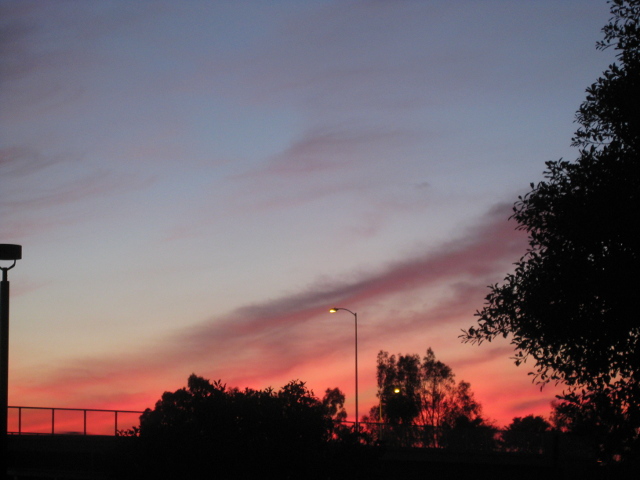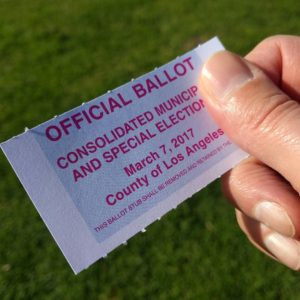Katie and I got up early so we could hit the polls first thing in the morning and not have to worry about whether we’d be stuck in an insanely long line at the end of the day, like we were in 2004 and 2006. The first thing we noticed was the sound of rain falling outside. Since we were expecting a huge turnout, I’d planned on walking, fearing we might have to park far enough away that we might as well have walked. Fortunately by the time we left, it had died down to little more than a drizzle.
We got to the polling place, an elementary school, about 7:05, just after it opened, found the right line (they had two precincts voting at the same location), and there were only about 15-20 people ahead of us. We got into a conversation with other people around us about the merits of early voting (one guy joked that he’d already voted for the 2012 election), exit polls, and the electoral college.
The poll workers were a surprise. Usually in this area it tends to be older people who volunteer to run the polls, but it seemed like 2/3 of them were in their late teens/early twenties. Katie figured it had to do with the economic slowdown: we know who’s out of work.
They’ve mostly worked out the kinks in the electronic voting system, though they’re now offering a choice of electronic or paper ballot when you sign in. You go through several stations, signing the roll of voters, confirming your address, and finally getting either a paper ballot or an access key for the electronic ballot.
I still don’t like the user interface on these voting machines — it’s a paddle wheel interface, where you rotate a dial to move the selection on the LCD screen forward or back, with buttons to check things off — but it does at least include a printed record. There’s a roll of paper in the machine with a window, and after you’ve confirmed the summary of your selections (with a big red button that says “Cast Ballot”), it prints them out, asks you to confirm the printout, then scrolls it out of view so the next person can’t see what you chose.
Anyway, the whole process took only 35 minutes from finding the line to picking up the “I Voted” sticker. Kids were just starting to line up for class. We went home, dropped off the umbrella (which we never actually needed), picked up our stuff and drove off to work only 15 minutes behind normal schedule.
(Cross-posted from LiveJournal, originally linked in the list below.)
Update: It’s been a while, so I don’t remember for sure if this is the right photo, but the date’s correct and it fits the description.


